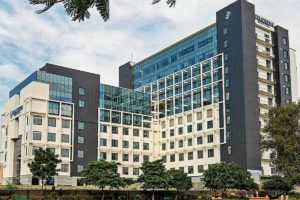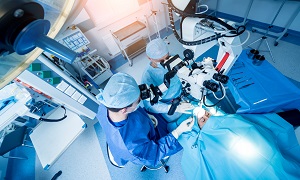Best Doctors in India for Laser Ablation
Best Hospitals in India for Laser Ablation
Lilavati Hospital & Research Centre, Mumbai
- City: Mumbai, India
Hospital Highlights:
- Lilavati Hospital & Research Centre is India’s premier multi-speciality tertiary care hospital and has been recognised as a global medical excellence centre.
- Lilavati Hospital & Research Centre has built an unrivalled level of trust with its patients over the years, thanks to a solid foundation that comprises cutting-edge facilities, the best medical competence, research, education, and charity endeavours.
- The hospital is quite proud of the fact that it now serves patients from all kinds of backgrounds, not just from the United States but from all around the world.
- The hospital has a total of 323 beds, one of the largest Intensive Care Units (ICUs), 12 Operation Theatres with modern amenities, over 300 consultants, and almost 1,800 personnel.
Venkateshwar Hospital, Dwarka, New Delhi
- City: New Delhi, India
Hospital Highlights:
- State-of-the-art technology and devoted healthcare professionals have been brought together under one roof at Venkateshwar Hospital to provide genuine medical care. The hospital’s professionals work together as a team to deliver the best possible treatment to their patients, using the most sophisticated equipment and information technology.
- Venkateshwar Hospital’s mission is to attain global excellence in healthcare by employing evidence-based, ethical clinical practices and cutting-edge technology by a team of highly skilled experts.
Marengo Asia Hospital, Faridabad
- City: Faridabad
Hospital Highlights:
In the sprawling city of Faridabad, where healthcare needs are diverse and ever-evolving, one institution has consistently stood out as a beacon of excellence in the field of medicine—Marengo Asia Hospital. Established with a vision to provide world-class healthcare services to the community it serves, Marengo Asia Hospital has emerged as a trusted name synonymous with quality, compassion, and innovation in healthcare.
Laser Ablation
Laser ablation is minimally invasive neurosurgery which uses smarter technology for removing tumors in the brain. This treatment can be used for several diseases which include brain tumors. This treatment uses lasers to effectively target and destroy or ablate the tumor. Compared to traditional open surgery, i.e. craniotomy for removing a brain tumor, this procedure involves lesser pain and shorter recovery time.
Purpose
This procedure might be a choice for people, especially, children suffering from brain tumors or abnormal tissue that can lead to seizures. If the damaged area is deep in the brain, these children might not have any other treatment options.
It is considered if other treatments such as antiseizure medications have been tried and failed.
The size matters as well, as this procedure works best on small lesions since the tip of the probe heats a small area. If your doctors are unable to identify this area, other treatments can be considered.
To the youngest patients to receive laser ablation are about 2 years of age. There is no upper age limit for receiving this treatment.
Preparation
Procedure
First, the patient receives medications that put them to sleep. They will not be feeling any pain. Then an advanced surgical tool is used to help the surgeon insert a probe in the best place for reaching the lesion. The probe is a very thin and flexible tube, which can send out light. The tube is about as wide as a toothpick.
Then a small incision is made in the patient’s scalp, just a bit wider than the probe. Once this is done, the surgeon puts the probe into the patient’s skull. Then the patient is moved into the MRI scanner, and with the help of the MRI display, the surgeon will able to check the precise placement of the tip of the probe in the patient’s brain.
After this, the laser is turned on to make the light come out of the tip of the probe.
The screen will be displaying where tissue is being heated and how warm it is getting. This will help the surgeon in deciding how much treatment is required, and when he/she needs to stop.
The treatment shouldn’t take over a few minutes. However, the careful setup before the treatment can take longer. The total time under anesthesia should be around four hours.
Aftercare
Generally, after this treatment, most people are able to go home within a couple of days. The recovery time required is much less as compared to after a craniotomy.
For most people, this treatment should be a cure. Around half the patients who suffer from epilepsy become free of seizures within a week or so. Though this provides the same success rate as compared with open surgery, the risks are far lesser. Some patients can continue to have seizures though they will be less severe or happen much less often. Sometimes it can require one year, to be sure that the procedure worked. For some patients, seizures can stop for some time and again come back.
Risks
Laser ablation has a few risks which include the chance of infections. There is also sometimes a chance of a healthy part of the brain getting affected. This generally depends on where the lesion is located.
You should discuss all risks in detail with your surgeon before the procedure is performed.
Children who don’t undergo laser ablation can still go for open heart surgery later if laser ablation doesn’t cure their disorder.





